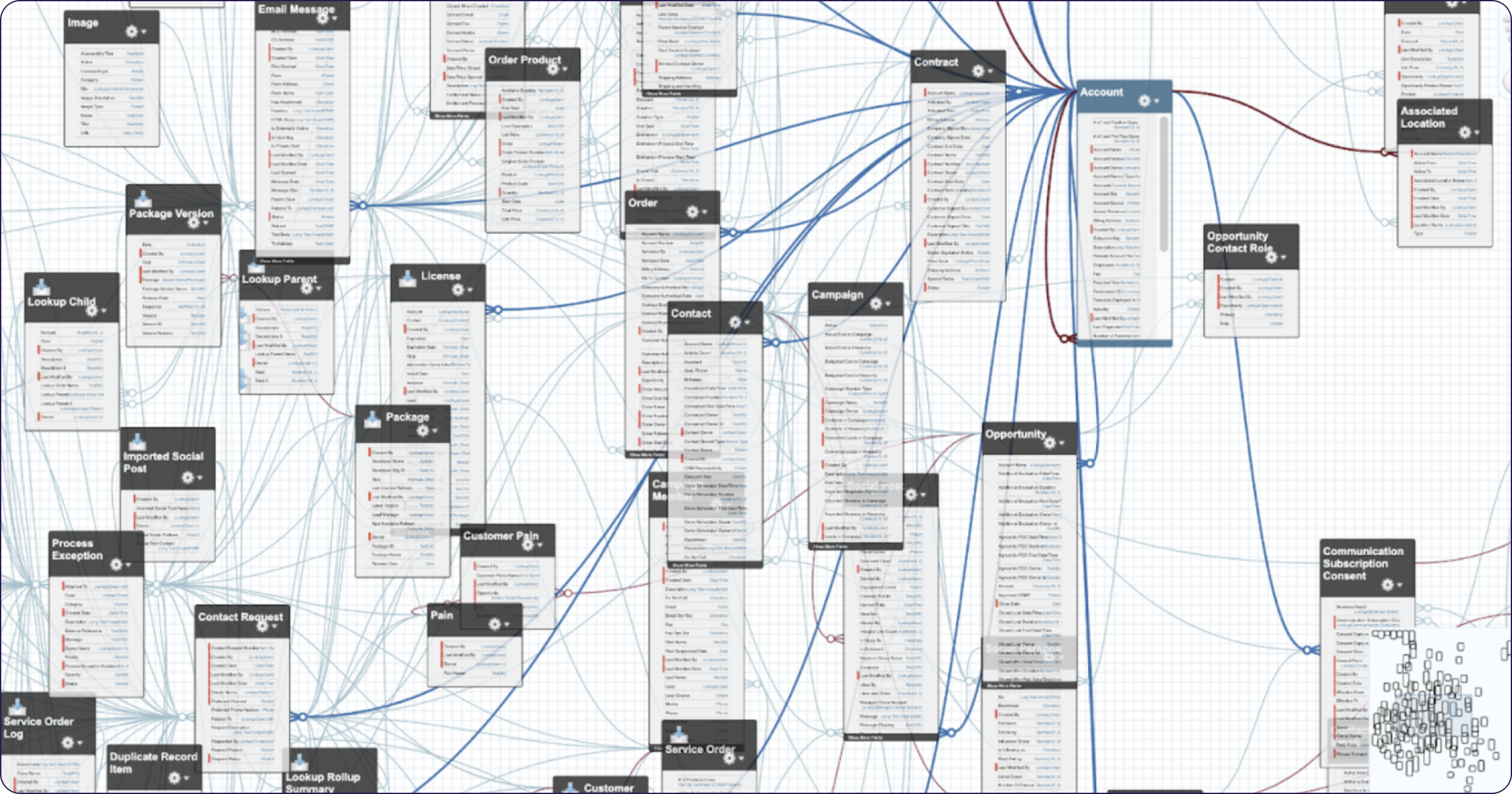
Salesforce automation has the potential to streamline operations, improve productivity, and reduce manual effort. However, as automation complexity increases, so do the risks. As Viktoriya Mishchuk highlights in her blog, "5 Hidden Risks of Too Much Salesforce Automation," excessive automation can backfire, creating performance bottlenecks, debugging nightmares, and system failures.
Over-automation—particularly through excessive use of Salesforce Flows—can introduce hidden costs and technical challenges that impact performance, scalability, and long-term system health. Understanding these risks is crucial to building scalable, resilient systems that align with broader business goals.
Mishchuk points out key risks of excessive automation, including conflicting logic, increased technical debt, and unintended system failures. One of the biggest culprits? The overuse of Salesforce Flow.
While Flow is a powerful tool, too many interdependent flows can lead to complex execution chains that are difficult to debug and maintain and to significant performance bottlenecks, particularly CPU timeouts.

CPU timeouts occur when Salesforce exceeds its processing limits, which can delay key operations and disrupt productivity. For a growing organization, these delays add up quickly, impacting overall system responsiveness and user productivity.
Strategic impact on performance:
- System bottlenecks: As automation intensifies, the sheer volume of synchronous Flows running simultaneously can overwhelm the system, especially under heavy user load. This leads to delays, diminished user experience, and inefficiencies.
- End-user productivity: Every minute of delay caused by CPU timeouts translates into a loss in productivity, particularly for sales teams relying on timely data and task automation.
Maintenance risks: debugging complex Flows and the cost of system failures
Salesforce Flows, especially those with interdependent automations, can be complex and prone to failures. When errors occur, troubleshooting can be time-consuming, requiring developers or admins to identify the root cause and correct the issue.
Strategic impact on maintenance:
- Resource drain: Time spent troubleshooting errors could be better invested in driving innovation, improving system infrastructure, or tackling strategic initiatives.
- Business continuity risk: System failures resulting from automation errors can halt critical processes, impacting revenue generation and customer satisfaction.
Scalability risks: reworking automation as processes evolve
As your organization grows, so do your processes—and what worked yesterday may no longer be scalable. Traditional Salesforce Flows often require frequent rework to adapt to evolving business needs. This is a costly and inefficient way to scale.
Strategic impact on growth:
- Technical debt: Excessive reliance on Flows can result in growing technical debt, making it harder to adapt as new requirements emerge. This limits your team's ability to implement agile changes that keep pace with the market.
- Slower adaptation: Continuous reworking of Flows as business processes change can create friction in responding to new opportunities or threats in the market. This means slower time-to-market and a more rigid tech stack.
Salesforce Flow versus Sweep Automation
As Mishchuk highlights, over-automation can create a tangled web of interdependent processes that are difficult to debug, maintain, and scale. Traditional Salesforce Flows can lead to CPU timeouts, increase technical debt, and cause system failures, resulting in both performance and debugging costs.
At Sweep, we recognize the problems over-automation can create and take a more sustainable approach to automation. Instead of relying on Salesforce Flows, which can contribute to performance bottlenecks and system failures, Sweep uses custom metadata and asynchronous operations. Here’s why it’s a better solution:
- Avoids CPU limitations: Unlike synchronous Salesforce Flows, which run within the same process and contribute to CPU timeouts, Sweep’s automations are asynchronous. This means they execute in the background, ensuring system performance remains smooth even under heavy usage.
- Simpler debugging & maintenance: Sweep’s visual approach makes it easy to track and maintain automation rules. Unlike Salesforce Flows, which can quickly become tangled and hard to manage, Sweep’s design allows for straightforward debugging and updates without the need for complex rework.
- Scalable for growth: As your processes evolve, Sweep’s automation builder makes it easy to update automation without the risk of technical debt or system failure. You can adjust and scale your automation as needed, avoiding the costly rework that comes with traditional tools.
Over-automation can introduce hidden costs that reduce the effectiveness of your Salesforce environment. By avoiding the pitfalls of traditional Salesforce Flows and leveraging Sweep’s custom metadata and asynchronous processes, you can scale your automation efforts efficiently without compromising on performance, ease of maintenance, or future adaptability.
If you're ready to streamline your Salesforce automation and minimize hidden costs, explore how Sweep can help. Book a demo here.











